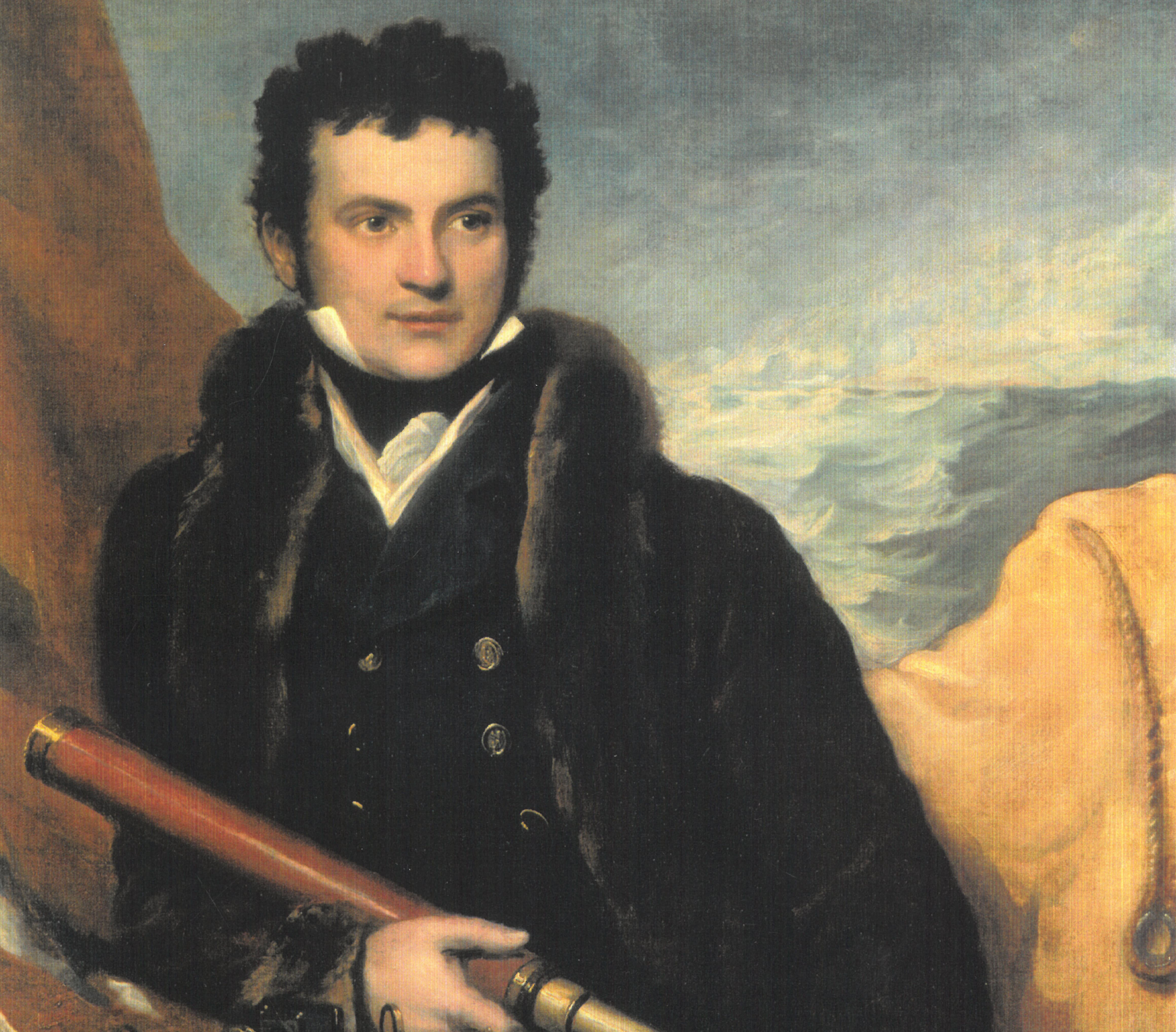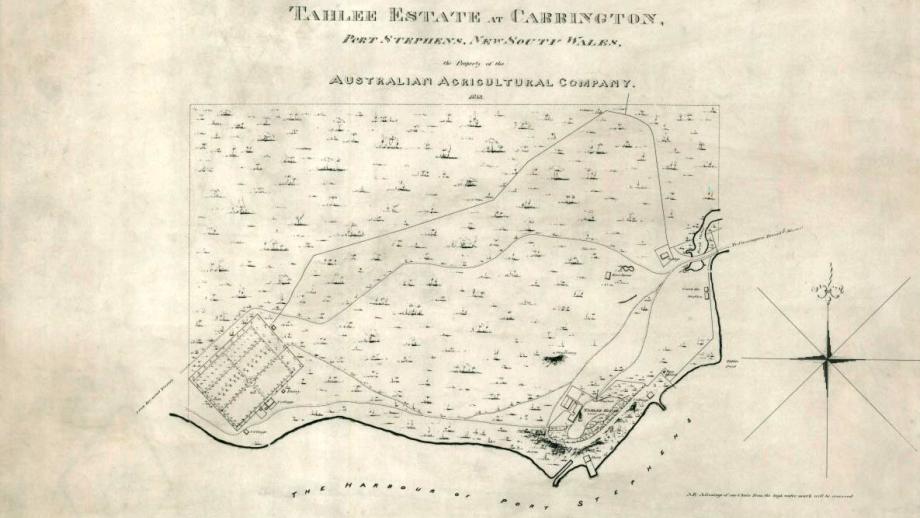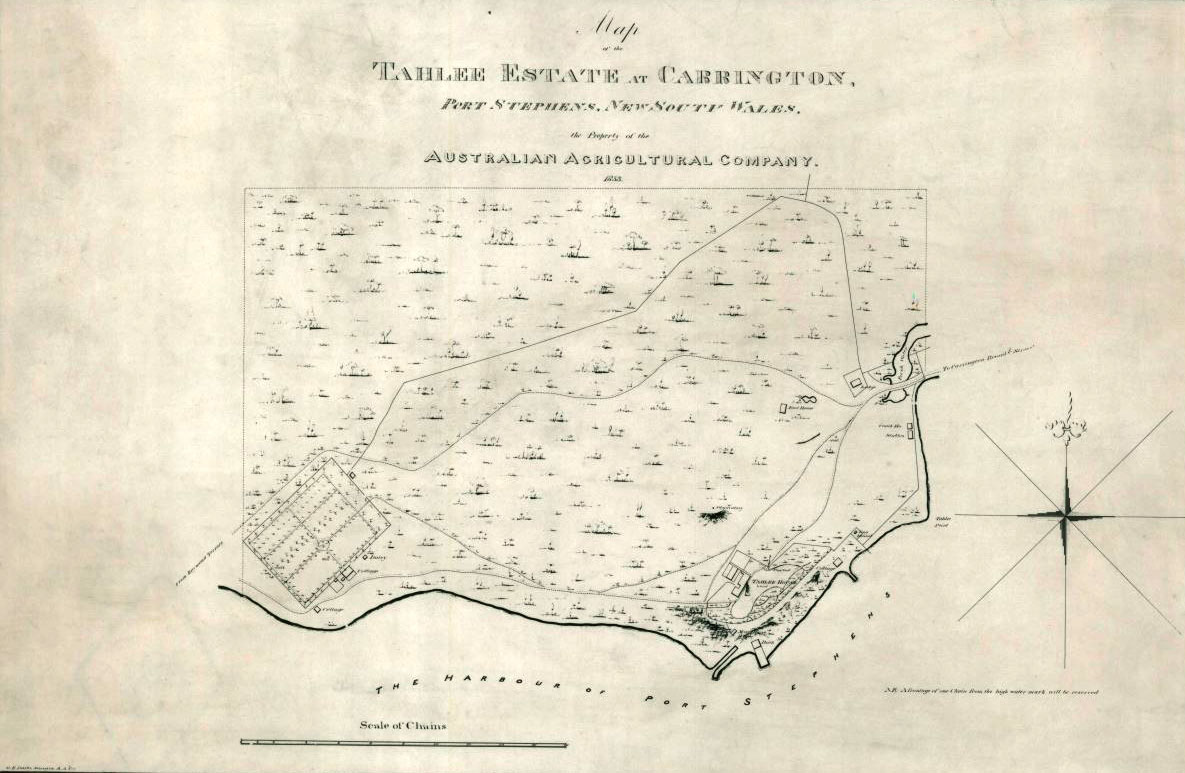Sir William Edward Parry
Sir William Edward Parry was born in Bath, England, in 1790. He was the son of an agriculturalist who had conducted early research on Merino sheep, which must have proved valuable in his new role. Parry had served in the Royal Navy, including during the Napoleonic Wars, and became well known for his extensive Arctic explorations, undertaking several expeditions between 1818 and 1829 to discover the North-West Passage and reach the North Pole. Although he failed in this undertaking, his party did reach the highest latitude ever recorded at that time. After returning to England and taking up a position as a hydrographer to the Admiralty, Parry was approached with an offer to serve as the Australian Agricultural Company’s Commissioner in New South Wales. The position was first offered to Parry’s co-explorer, Sir John Franklin, later Lt Governor of Van Diemen’s Land, but he declined.
William Parry and his wife Isabella arrived in New South Wales in December 1829. While a heavily pregnant Isabella stayed in Sydney at Government House as a guest of Sir Ralph and Lady Darling, William travelled to Port Stephens to inspect the Company’s operations. In March 1830 William and Isabella along with their newborn twins arrived at their new home, Tahlee House.
Parry arrived with three major tasks to undertake: the reorganisation and consolidation of the Company’s pastoral establishment; the review of the million-acre land grant and negotiation of an exchange of land for part of the Port Stephens Estate; and managing the takeover of the government coal mines at Newcastle (Pemberton 2011).
It was under Parry’s instruction that greater efforts were made to tend to the physical and spiritual needs of the Company’s workers and he saw to it that children on the Estate were baptised and educated. Significant construction was undertaken under Parry's leadership, including the building of Booral House, Stroud House, and Telligherry House. It was also during this time that the flour mill, Parish House, and St John’s Church were constructed in Stroud. Parry also ordered the construction of the dam on the Karuah River, now known as the Washpool. In later years, this allowed for the wool from the Company’s flock to be washed prior to being transported, saving the Company the higher costs of transporting dirty wool to be washed in England.
Soon after his arrival, Parry established a new system of administration, with the Company’s estate divided into smaller departments overseen by superintendents. These departments included Accounts, Flocks, Cattle, Stud, Agriculture, and Works. Underneath each of these departmental superintendents were a selection of indentured servants, mostly recruited from Europe, as well as convicts / assigned servants. Most of the Company’s shepherds, stockmen, and labourers were convicts, however it was a constant battle to obtain enough to meet demand (Pemberton 2005).
Although Parry continued to reside at Tahlee House, the Company’s centre of operations shifted from Carrington to Stroud and Booral, where 500 acres of land were cleared. Stroud began to resemble an English village and grew to include houses, stores, a school, and a rectory, and become the home for many of the indentured servants who had stayed on after the completion of their contracts, along with their families.
The Company’s sheep stations stretched from Gloucester in the north to the Barrington Tops in the west. Each station had around 1,000 sheep which were tended by two shepherds and a hutkeeper. By 1832 there were 32,000 sheep on the Port Stephens Estate under the overall care of the Superintendent of Sheep, Charles Hall.
In 1833 Parry made the decision to return to England. After his return he held the posts of comptroller of steam machinery at the Admiralty (1837-46), captain superintendent of Haslar Hospital, Gosport, and from 1853, on attaining flag rank, lieutenant-governor of Greenwich Hospital, the home for naval pensioners (Parry 2006). In 1848 he also assisted with the search for the lost Arctic expedition of Captain Sir John Franklin and his party of 129 men who had set out from Britain in search of the Northwest Passage.
Parry died in England in 1855 and was buried at Greenwich.
References
Parry, A 2006, Sir William Edward Parry (1790-1855), Australian Dictionary of Biography, National Centre of Biography, Australian National University, <https://adb.anu.edu.au/biography/parry-sir-william-edward-2539>
Pemberton, P 2005, In the Service of the Company: Letters of Sir Edward Parry, Commissioner of the Australian Agricultural Company. Volume 1: December 1829 – June 1832, ANU Press, Canberra.
Pemberton, P 2011, Pure Merinos and Others: The Shipping Lists of the Australian Agricultural Company, ANU Archives of Business and Labour, Canberra.





